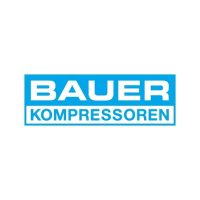WARNING
WARNING
Instruction Manual Junior II
17
4. MAINTENANCE
4.1. MAINTENANCE RECORD
We recommend that all maintenance work is recorded in the
service book, showing the date and details of the work car
ried out. This will help to avoid expensive repairwork caused
by missed maintenance work. If it is necessary to claim
against the warranty, it will help to have proof that regular
maintenance work has been carried out and that the dam
age has not been caused by insufficient maintenance. Please
refer to section 23 of our general terms and conditions.
4.2. MAINTENANCE INSTRUCTIONS
Always shut down and decompress
the complete system prior to carry
ing out any work on the compressor.
Never repair pressure lines by solder
ing or welding.
Check the complete system for leakage
from time to time by brushing all fittings
and couplings with soapy water or spray
ing with leak test spray. Repair any leak
age.
Only use original spare parts for mainten
ance or repair work.
Change TRIPLEX longlife cartridge accord
ing to chapter 4.4.4.!
The used cartridge must be disposed of ac
cording to local regulations.
Maintenance of drive motor/engine ac
cording to manufacturer's operating in
structions.
4.3. MAINTENANCE SCHEDULE
The maintenance schedule is contained in the service manual
delivered with every compressor unit.
4.4. MAINTENANCE WORK
This chapter contains the maintenance work as well as a
short functional description for each component.
4.4.1. LUBRICATION
TYPE OF OIL
For proper care and maintenance of the compressor, using
the correct oil is of vital importance. Depending on the ap
plication of the compressor the requirements placed on the
oil are:
- low deposits
- no carbonizing effect, especially in the valves
- good anti-corrosive properties
- emulsification of the condensate in the crankcase
- physiological and toxicological suitability.
Due to the thermal load on the compressor only high quality
oil should be used. You are recommended to restrict oils to
those which have been approved by us and are listed in our
lubricating oil list.
The current oil list is provided in the annex,
chapter 8. Order this list regularly through
the BAUER Technical Service Department.
For operation under difficult conditions such as continuous
running and/or high ambient temperatures we recommend
the use of BAUER high performance compressor oils, only,
according to the oil list. These oils are tested in our com
pressors and have proved excellent quality under ambient
temperatures between +5 °C (41°F) and +45 °C (113 °F). For
lower temperatures, a heating device is required which is ca
pable of pre-heating the crankcase up to +5 °C (41 °F).
For operation under less severe conditions, for intermittent
operation, or operation with long idle periods we can also
recommend mineral compressor oils which are suitable for
operation under ambient temperatures between +5 °C (41
°F) and +35 °C (95 °F). Here also, pre-heating is required for
lower temperatures.
OIL LEVEL CHECK
Check oil level daily prior to putting compressor into oper
ation. Check using oil dipstick.
Take care that dip stick is inserted completely. Note that the
oil level must be between minimum and maximum dipstick
markings (see Fig. 26).
Oil level must not decrease below min.
mark but also not exceed max. mark as this
will cause excessive lubrication of com
pressor and result in valves sooting up.
OIL CHANGE INTERVALS
Mineral oils every 1,000 operating hours,
at least annually
Synthetic oils every 2,000 operating hours,
at least biennially

